Where is PowerPC today?
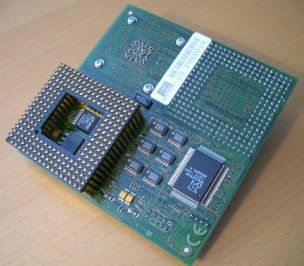
Phase 5 PowerUP board prototype
Anyone who messed around with computers back in the 90s will remember PowerPC. This was the only real alternative for Intel’s complete dominance with the x86 CPU’s and believe me when I say the battle was fierce! Behind the PowerPC you had companies like IBM and Motorola, companies that both had (or have) an axe to grind with Intel. At the time the market was split in half – with Intel controlling the business PC segment – while Motorola and IBM represented the home computer market.
The moment we entered the 1990s it became clear that Intel and Microsoft was not going to stay on their side of the fence so to speak. For Motorola in particular this was a death match in the true sense of the word, because the loss of both Apple and Commodore represented billions in revenue.
What could you buy in 1993?
The early 90’s were bitter-sweet for both Commodore and Apple. Faster and affordable PC’s was already a reality and as a consequence – both Amiga machines and Mac’s were struggling to keep up.
The Amiga 1200 still represented a good buy. It had a massive library of software, both for entertainment and serious work. But it was never really suited for demanding office applications. It did wonders in video and multimedia development, and of course games and entertainment – but the jump in price between A1200 and A4000 became harder and harder to justify. You could get a well equipped Mac with professional tools at that range.
Apple on the other hand was never really an entertainment company. Their primary market was professional graphics, desktop publishing and music production (Photoshop, Pro-tools, Logic etc. were exclusive Mac products). When it came to expansions and ports they were more interested in connecting customers to industrial printers, midi devices and high-volume storage. Mac was always a machine for the upper class, people with money to burn; The Amiga dominated the middle-class. It was a family type computer.
But Apple was not a company in hiding, neither from Commodore or the Wintel threat. So in 1993 they introduced the Macintosh Quadra series to the consumer market. Unlike their other models this was aimed at home users and students, meaning that it was affordable, powerful and could be used for both homework and professional applications. It was a direct threat to upper middle-class that could afford the big box Amiga machines.
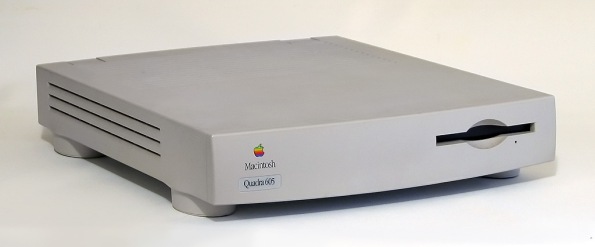
The 68k Macintosh Quadra came out in October of 1993
But no matter how brilliant these machines were, there was no hiding the fact that when it came to raw power – the PC was not taking any prisoners. It was graphically superior in every way and Intel started doubling the CPU speed exponentially year by year; Just like Moore’s law had predicted.
With the 486-DX2 looming on the horizon, it was game over for the old and faithful processors. The Motorola 68k family had been there since the late 70’s, it was practically an institution, but it was facing enemies on all fronts and simply could not stand in the way of evolution.
The PowerPC architecture
If you are in your 20’s you wont remember this, but back in the late 80’s early 90’s, the battle between computer vendors was indeed fierce. You have to take into consideration that Microsoft and Intel did a real number on IBM. Microsoft stabbed IBM in the back and launched Windows as a direct competitor for IBM’s OS2. When I write “stabbed in the back” I mean that literally because Microsoft was initially hired to create parts of OS/2. It was the typical lawsuit mess, not unlike Microsoft and Sun later, where people would pick sides and argue who the culprit really was.
As you can imagine IBM was both bitter and angry at Microsoft for stealing the home PC market in such a shameful way. They were supposed to help IBM and be their ally, but turned out to be their most fierce competitor. IBM had also created a situation where the PC was licensed to everyone (hence the term “ibm clone”) – meaning that any company could create parts for it and there was little IBM could do to control the market like they were used to. They would naturally get revenue from these companies in the form of royalties (and would later retire 99% of all their products. Why work when they get billions for doing nothing?), but at the time they were still in the game.
Motorola was in a bad situation themselves, with the 68k line of processors clearly incapable of facing the much faster x86 CPU’s. Something new had to be created to ensure their market share.
The result of this “marriage of necessity” was the PowerPC line of processors.
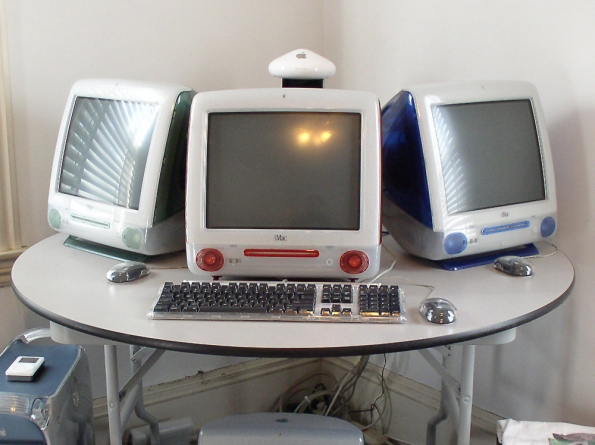
The Apple “Candy” Mac’s made PPC and computing sexy
Apple jumped on the idea. It was the only real alternative to x86. And you have to remember that – had Apple gone to x86 at that point, they would basically have fed the forces that wanted them dead. You could hardly make out where Microsoft started and Intel ended during the early 90s.
I’m going to spare you the whole fall and rebirth of Apple. Needless to say Apple came to the point where their branch of PowerPC processors caused more problems than they had benefits. The type of PowerPC processors Apple used generated an absurd amount of heat, and it was turning into a real problem. We see this in their later models, like the dual cpu G5 PowerMac where 40% of the cabinet is dedicated purely to cooling.
And yes, Commodore kicked the bucket back in 1994 so they never finished their new models. Which is a damn shame because unlike Apple they went with a dedicated RISC processor. These models did not suffer the heating problems the PPC’s used by Apple had to deal with.
Note: PPC and RISC are two sides of the same coin. PPC processors are RISC based, but naturally there exists hundreds of different implementations. To avoid a ton of arguments around this topic I treat PPC as something different from PA-RISC which Commodore was playing with in their Hombre “skunkworks” projects.
You can read all about Apple’s strain of PowePC processors here, and PA-RISC here.
PPC in modern computers?
I am going to be perfectly honest. When I heard that the new Amiga machines were based on PowerPC my reaction was less than polite. I mean who the hell would use PowerPC in our day and age? Surely Apple’s spectacular failure would stand as a warning for all time? I was flabbergasted to say the least.
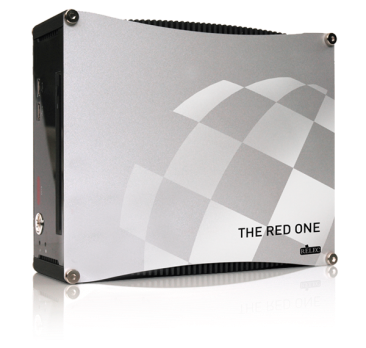 The Amiga One came out and I didn’t even give it the time of day. The Sam440 motherboards came out, I couldn’t care less. It would have been nice to own one, but the price at the time and the lack of software was just to disproportionate to make sense.
The Amiga One came out and I didn’t even give it the time of day. The Sam440 motherboards came out, I couldn’t care less. It would have been nice to own one, but the price at the time and the lack of software was just to disproportionate to make sense.
And now there is the Amiga x5000 and a smaller, more affordable A1222 (a.k.a “Tabour”) model just around the corner. And they are both equipped with a PPC CPU. There are just two logical conclusions you can make when faced with this: either the maker of these products is nuttier than a snicker’s bar, or there is something the general public doesn’t know.
What the general public doesn’t know has turned out to be quite a lot. While you would think PPC was dead and buried, the reality of PPC is not that simple. Turns out there is not just one PPC family (or branch) but several. The one that Apple used back in the day (and that MorphOS for some odd reason support) represents just one branch of the PPC tree if you like. I had no idea this was the case.
The first thing you are going to notice is that the CPU in the new Amiga’s doesn’t have the absurd cooling problems the old Mac’s suffered. There are no 20cm cooling ribs and you don’t need 2 fans on Ritalin to prevent a cpu meltdown; and you also don’t need a custom aluminium case to keep it cool (everyone thinks the “Mac Pro” cases were just to make them look cool. Turned out it was more literal, it was to turn the inside into a fridge).
In other words, the branch of PPC that we have known so far, the one marketed as “PowerPC” by Apple, Phase5 and everyone back in the 90’s is indeed dead and buried. But that was just one branch, one implementation of what is known as PPC.
Remember when ARM died?
When I started to dig into the whole PPC topic I could not help but think about the Arm processor. It’s almost spooky to reflect on how much we, the consumer, blindly accept as fact. Just think about it: You were told that PowerPC was the bomb, so you ended up buying that. Then you were told that PowerPC was crap and that x86 was the bomb, so you mentally buried PowerPC and bought x86 instead. The consumer market is the proverbial cheep farm where most of us just blindly accept whatever advertising tell us.
This was also the case with Arm. Remember a company called Acorn? It was a great british company that invented, among other things, the Arm core. I remember reading articles about Acorn when I was a kid. I even sold my Amiga for a while and messed around with an Acorn Archimedes. A momentary lapse of sanity, I know; I quickly got rid of it and bought back my Amiga. But I did learn a lot from messing around in RISC OS.
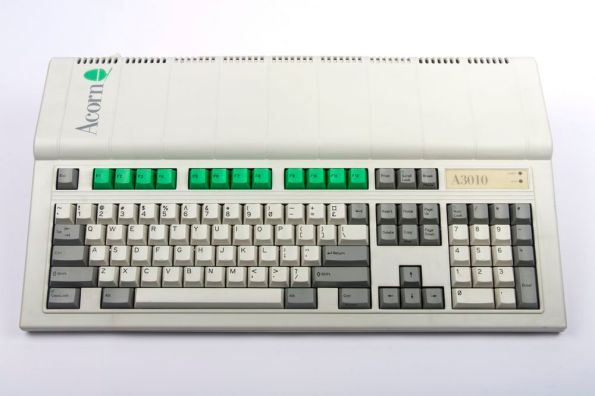
The Acorn Archimedes, a brilliant RISC based machine that sadly didnt make it
My point is, everyone was told that Arm was dead back in the 80’s. The Acorn computers used a pure RISC processor at the time (again, PPC is a RISC based CPU but I treat them as separate since the designs are miles apart), but it was no secret that they were hoping to equip their future Acorn machines with this new and magic Arm thing. And reading about the power and speed of Arm was very exciting indeed. Sadly such a computer never saw the light of day back in the 80’s. Acorn went bust and the market rolled over Acorn much like it would Commodore later.
The point im trying to make is that, everyone was told that Arm died with Acorn. And once that idea was planted in the general public, it became a self-fulfilling prophecy. Arm was dead. End of story. It doesn’t matter that Acorn had set up a separate company that was unaffected by the bankrupcy. Once the public deem something as dead, it just vanish from the face of the earth.
Fast forward to our time and Arm is no longer dead, quite the opposite! It’s presently eating its way into just about every piece of electronics you can think of. In many ways Arm is what made the IOT revolution possible. The whole Raspberry PI phenomenon would quite frankly never have happened without Arm. The low price coupled with the fantastic performance -not to mention that these cpu’s rarely need cooling (unless you overclock the hell out of them) has made Arm the most successful CPU ever made.
The PPC market share
With Arm’s so-called death and re-birth in mind, let’s turn our eyes to PPC and look at where it is today. PPC has suffered pretty much the same fate as Arm once did. Once a branch of the tech is defined “dead” by media and spin-doctors, regardless if the PPC is actually a cluster of designs not a single design or “chip”, the general public blindly follows – and mentally bury the whole subject.
And yes I admit it, I am guilty of this myself. In my mind there was no distinction between PPC and PowerPC. Which is a bit like not knowing the difference between Rock & Roll as a genre, and KISS the rock band. If we look at this through a parallel what we have done is basically to ban all rock bands, regardless of where they are from, because one band once gave a lousy concert.
And that is where we are at. PPC has become invisible in the consumer market, even though it’s there. Which is understandable considering the commercial mechanisms at work here, but is really PPC dead? This should be a simple question. And commercial mechanisms not withstanding the answer is a solid NO. PPC is not dead at all. We have just parked it in a mental limbo. Out of sight, out of mind and all that.

Playstation 3, Nintendo WII U and Playstation VR all use Freescale PPC
PPC today has a strong foothold in industrial computing. The oil sector is one market that use PPC SBC’s extensively (read: single board computers). You will find them in valve controllers, pump and drill systems and pretty much any systems that require a high degree of reliability.
You will also be surprised to learn that cheap PPC SBC’s enjoy the same low energy requirements people adopt Arm over (3.3 – 5.0 V). And naturally, the more powerful the chip – the more juice it needs.
The reason that PPC is popular and still being used with great success is first of all reliability. This reliability is not just physical hardware but also software. PPC gives you two RTOS’s (real-time operating system) to choose from. Each of them comes with a software development toolchain that rivals whatever Visual Studio has to offer. So you get a good-looking IDE, a modern and up to date compiler, the ability to debug “live” on the boards – and also real-time signal processing protocols. The list of software modules you can pick from is massive.
The last part of that paragraph, namely real-time signal processing, is extremely important. Can you imagine having an oil valve with 40.000 cubic tons of pressure failing, but the regulator that is supposed to compensate doesn’t get the signal because Linux or Windows was busy with something else? It get’s pretty nutty at that level.
The second market can be found with set-top boxes, game consoles and tv signal decoders. While this market is no doubt under attack from cheap Arm devices – PPC still has a solid grip here due to their reliability. PPC as an embedded platform has roughly two decades head start over Arm when it comes to software development. That is a lifetime in computing terms.
When developers look at technology for a product they are prototyping, the hardware is just one part of the equation. Being able to easily write software for the platform, perform live debugging of code on the boards, and maintain products over decades rather than consumer based 1-3 year warranties; it’s just a completely different ballgame. Technology like external satellite-dish parts runs for decades without maintenance. And there are good reasons why you dont see x86 or Arm here.

Playstattion 3 and the new PSX VR box both have a Freescale PPC cpu
As mentioned earlier, the PPC branch used today is not the same branch that people remember. I cannot stress this enough, because mixing these is like mistaking Intel for AMD. They may have many of the same features but ultimately they are completely different architectures.
The “PowerPC” label we know from back in the day was used to promote the branch that Apple used. Amiga accelerators also used that line of processors for their PowerUP boards. And anyone who ever stuffed a PowerUP board in their A1200 probably remember the cooling issues. I bought one of the more affordable PowerUP boards for my A1200, and to this day I associate the whole episode as a fiasco. It was haunted by instability, sudden crashes and IO problems – all of it connected to overheating.
But PPC today as delivered by Freescale Semiconductors (bought by NXP back in 2015) are different. They don’t suffer the heat problem of their remote and extinct cousins, have low power requirements and are incredibly reliable. Not to mention leagues more powerful than anything Apple, Phase 5 or Commodore ever got their hands on.
Is Freescale for the Amiga a total blunder?
Had you asked me a few days back chances are I would said yes. I have known for a while that Freescale was used in the oil sector, but I did not take into consideration the strength of the development tools and the important role an RTOS system holds in a critical production environment.
I must also admit that I had no idea that my Playstation and Nintendo consoles were PPC based. Playstation 4 doesn’t use PPC on its motherboard, but if you buy the fantastic and sexy VR add-on package, you get a second module that is again – a PPC based product.
It also turns out that IBM’s high-end mainframes, those Amazon and Microsoft use to build the bedrock for cloud computing are likewise PPC based. So once again we see that PPC is indeed there and it’s playing an important role in our lives – but most people don’t see it. So all of this is a matter of perspective.
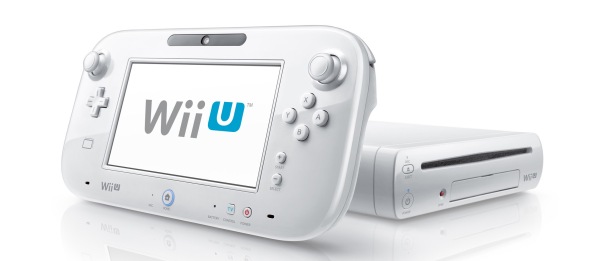
The Nintendo WII U uses a Freescale PPC cpu, not exactly a below-par gaming system
But the Amiga x5000 or A1222 will not be controlling a high-pressure valve or serving half a million users (hopefully); so does this affect the consumer at all? Does any of this hold any value to you or me? What on earth would real-time feedback mean for a hobby user that just want to play some games, watch a movie or code demos?
The answer is: it could have a profound benefit, but it needs to be developed and evolved first.
Musicians could benefit greatly from the superior signal processing features, but as of writing I have yet to find any mention of this in the Amiga NG SDK. So while the potential is there I doubt we will see it before the Amiga has sold in enough volume.
Fast and reliable signal dispatching in the architecture will also have a profound effect on IPC (inter process communication), allowing separate processes to talk with each other faster and more reliably than say, windows or Linux. Programmers typically use a mutex or a critical-section to protect memory while it’s being delivered to another process (note: painting in broad strokes here), this is a very costly mechanism under Windows and Linux. For instance, the reason UAE is still single threaded is because isolating the custom chips in separate threads and having them talk – turned out to be too slow. If PPC is able to deal with that faster, it also means that processes would communicate faster and more interesting software can be made. Even practical things like a web-server would greatly benefit from real-time message dispatching.
So for us consumers, it all boils down to volume. The Freescale branch of PPC processors is not dead and will be around for years to come; they are sold by the millions every year to great variety of businesses; and while most of them operate outside the traditional consumer awareness, it does have a positive effect on pricing. The more a processor is sold the cheaper it becomes.
Most people feel that the Amiga x5000 is to expensive for a home computer and they blame that on the CPU. Forgetting that 50% of the sub total goes into making the motherboard and all the parts around the CPU. The CPU alone does not represent the price of a whole new platform. And that’s just the hardware! On top of this you have the job of re-writing a whole operating system from scratch, add features that have evolved between 1994 and 2017, and make it all sing together through custom written drivers.
So it’s not your average programming project to say the least.
But is it really too expensive? Perhaps. I bought an iMac 2 years back that was supposed to be my work machine. I work as a developer and use VMWare for almost all my coding. Turned out the i5 based beauty just didn’t have the ram. And fitting it with more ram (it came with 16 gigabytes, I need at least 32) would cost a lot more than a low-end PC. The sad part is that had I gone for a PC I could have treated myself to an i7 with 32 gigabyte ram for the same price.
I later bit the bullet and bought a 3500€ Intel i7 monster with 64 gigabytes of ram and the latest Nvidia graphics card. Let’s just say that the Amiga x5000 is reasonable in context with this. I basically have an iMac i have no use for, it just sits there collecting dust and is reduced to a music player.
Secondly we have to look at potential. The Mac and Windows machines now have their potential completely exposed. We know what these machines do and it’s not going to change any time soon.
The Amiga has a lot of hidden potential that has yet to be realized. The signal processing is just one of them. The most interesting is by far the Xena chip (XMOS) that allow developers to implement custom hardware in software. It might sound like FPGA but XMOS is a different technology. Here you write code using a custom C compiler that generates a special brand of opcodes. Your code is loaded onto a part of the chip (the chip is divided into X number of squares, each representing a piece of logic, or “custom chip” if you like) and will then act as a custom-chip.
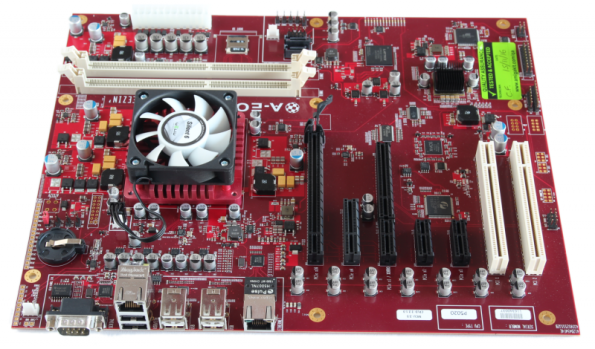
The Amiga x5000 in all her glory, notice the moderate cooling for the CPU
The XENA technology could really do wonders for the Amiga. Instead of relying on traditional library files that are executed by the main CPU, things like video decoding, graphical effecs, auxiliary 3D functionality and even emulation (!) can now be dealt-with by XENA and executed in parallel with the main CPU.
If anything is going to make or break the Amiga, it wont be the Freescale PPC processor – it will be the XENA chip and how they use it to benefit the consumer.
Just imagine running UAE almost solely on the XENA chip, emulating 68k applications at near native speed – without using the main CPU at all? Sounds pretty good! And this is a feature you wont find on a PC motherboard. Like always they will add it should it become popular, but right now it’s not even on the radar.
So I for one do believe that the next generation Amiga machines have a shot. The A1222 is probably going to be the defining factor. It will retail at an affordable price (around 450€) and will no doubt go head-to-head with both consoles and mid-range PC’s.
So like always it’s about volume, timing and infrastructure. Everything but the actual processor to be honest.
Last words
Its been a valuable experience to look around and read up on PPC. When I started my little investigation I had a dark picture in my head where the new Amiga machines were just a waste of time. I am happy to say that this is not true and the Freescale processors are indeed alive and kicking.
It was also interesting to see how widespread PPC technology really is. It’s not just a specialist platform, although that is absolutely where it’s strength is financially; it ships in everything from your home router to your tv-signal decoder or game system. So it does have a foot in the consumer market, but like I have outlined here – most consumers have parked it in a blind-spot and we associate the word “PowerPC” with the fiasco of Apple in the past. Which is a bit sad because it’s neither true or fair.
I have no problem seeing a future where the Amiga becomes a viable commercial product again. I think there is some way to go before that happens, and the spear-head is going to be the A1222 or a similar product.
But like I have underlined again and again – it all boils down to developers. A platform is only as good as the software you can run on it, and Hyperion should really throw themselves into porting games and creativity software. They need to build up critical mass and ship the A1222 with a ton of titles.
For my personal needs I will be more than happy just owning the x5000. It doesn’t need to be a massive commercial success, because Amiga is in my blood and I will always enjoy using it. And yes it is a bit expensive and I’m not in the habit of buying machines like this left and right. But I can safely say that this is a machine that I will be enjoying for many, many years into the future – regardless of what others may feel about it.
I would suggest that Hyperion lower their prices to somewhere around 1000€ if possible. Right now they need to think volume rather than profit, and hopefully Hyperion will start making the OS compatible with Arm. Again my thoughts go to volume and that IOT and embedded systems need an alternative to Linux and Windows 10 embedded.
But right now I’m itching to start developing for it – and I’m not alone 🙂
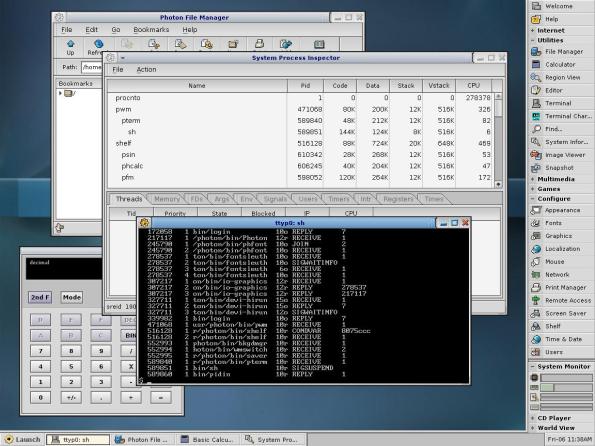
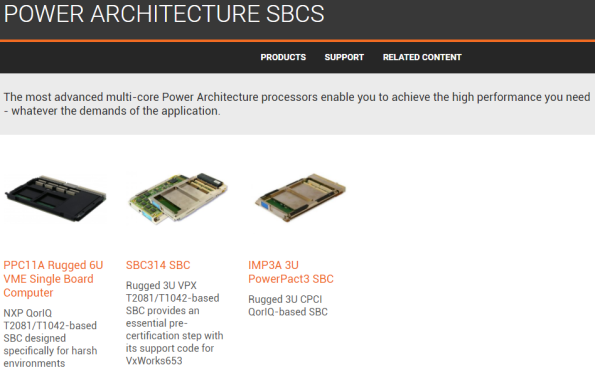
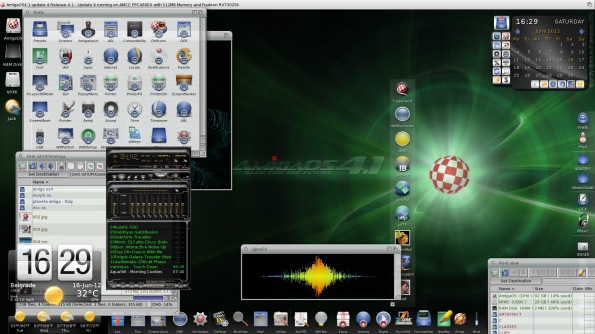

I was a die hard Amiga user and I learned C on the Amiga. I can’t really take it seriously anymore since Amiga OS doesn’t have protected memory, threads, SMP support, and all of the other viable components that a post 1980s operating system needs. Not to mention, not having protected memory is opening yourself up to very dangerous malware as we know from the first Amiga viruses. Luckily back in the 1980s they were harmless. You could stick a floppy and presto you had a virus.
Well that was the old machines. The new machines are very different. People have to put these mental images aside. The A500 of the 80s is obviously not what is being released today.
Fixed in 4.x
Great article! I find that the only way technical journalist can keep things straight is… it is either alive or dead! We put a lot of work being secret and when the journalist hears dead…they want to move on because something new is being unearthed.
You’re using literally in the informal sense, meaning the opposite of the formal definition. That literally makes my head explode.
Indeed. And no extra cost! You try writing articles in norwegian 🙂
Good Article. I recently posted on Motorola/Freescale/NxP side of story as well https://embedkari.com/2018/12/09/risc-avr-power/
You keep referring to AmigaOne as Amiga. The Amiga was 68K-based, the AmigaOne line is PPC-based. In any case you seem to think that the AmigaOne just needs to sell in high enough numbers to do – what, something – bring PPC into the home again? I’m not really sure if I’m reading an article about PPC or AmigaOne here.
RTOS’es out there support PPC, IBM has POWER “mainframes”, but this isn’t entering the home of a typical consumer. Maybe PPC could have inroads in the hobbyist developer market, but where is the low-cost hobbyist-ready developer PPC system like Arduino and RPi? There aren’t any, unless hacking the Wii is your thing.
I think PPC has a good path to the future but that path doesn’t lead back into the home, any more than XENA turned out to be a good marketing feature for AmigaOne.
Hi Jon, I read this great post you did on RISC etc some time ago but then I came across an interview on Remotely Interested podcast with the great Dave Needle. I had to come back here and post so that you could hopefully tune in and listen to it. He basically talks about when he worked for Apple and how he was asked as an assignment to look into ARM and Acorn computer’s new RISC computers/architecture. He took that as a basis for making his own processor architecture to use for Apple!! It didn’t get used but the interview is so interesting as this is before PowerPC came out. The snippet of him talking is at 25mins and 30 seconds at the end of Remotely Interested episode 6:
Let me know what you think but it ties in really nicely with your above post and I thought you’d also find it an interesting listen 🙂
Ill try to have a look this weekend, pretty packed here at the moment. But thank you for the heads up, Dave Needle is an icon!
Thanks yes the whole podcast episode is fascinating. A great interview with a legend!! It was just my ears pricked up from reading your post when I heard that little clip right at the end in the out-takes about RISC, Acorn and Apple too! I thought wow I better let Jon know!! haha